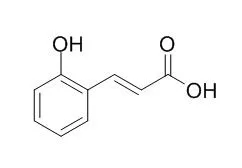Trichlorfon is an organophosphate insecticide used to control cockroaches, crickets, silverfish, bedbugs, fleas, cattle grubs, flies, ticks, leaf miners, and leaf-hoppers. It is also used to treat domestic animals for control of internal parasites. Trans-2-Hydroxycinnamic acid (T2HCA) is a hydroxyl derivative of cinnamic acid. The present study highlights trichlorofon-induced toxicity and the protective role of T2HCA in the liver, kidney, and brain of female Wistar rats.
METHODS AND RESULTS:
The rats were given a single dose of trichlorofon (150 mg / kg bw) and pre- and post-treatment T2HCA (50 mg / kg bw) for seven days. Trichlorofon enhanced oxidative stress in liver, kidney, and brain of the rats, which was evident from the elevation of lipid peroxidation (LPO). The reduced level of non-enzymatic antioxidant glutathione (GSH) also indicated the presence of an oxidative insult. The activity of enzymatic antioxidants like superoxide dismutase (SOD), catalase (CAT), glutathione-s-transferase (GST), glutathione reductase (GR), and glutathione peroxidase (GPx) was significantly decreased on trichlorfon administration. Pre and post treatment with T2HCA decreased the LPO level and increased SOD, CAT, GST, GR, GPx, and GSH in the brain, liver, and kidney. Trichlorfon-induced reduction in acelylcholinestrase was also ameliorated with T2HCA treatment.
CONCLUSIONS:
In conclusion, trichlorfon-mediated induction in the reactive oxygen species and disturbance in the antioxidant enzymes' defense system was moderately ameliorated by antioxidant trans-2-Hydroxycinnamic acid. |






 Cell. 2018 Jan 11;172(1-2):249-261.e12. doi: 10.1016/j.cell.2017.12.019.IF=36.216(2019)
Cell. 2018 Jan 11;172(1-2):249-261.e12. doi: 10.1016/j.cell.2017.12.019.IF=36.216(2019) Cell Metab. 2020 Mar 3;31(3):534-548.e5. doi: 10.1016/j.cmet.2020.01.002.IF=22.415(2019)
Cell Metab. 2020 Mar 3;31(3):534-548.e5. doi: 10.1016/j.cmet.2020.01.002.IF=22.415(2019) Mol Cell. 2017 Nov 16;68(4):673-685.e6. doi: 10.1016/j.molcel.2017.10.022.IF=14.548(2019)
Mol Cell. 2017 Nov 16;68(4):673-685.e6. doi: 10.1016/j.molcel.2017.10.022.IF=14.548(2019)